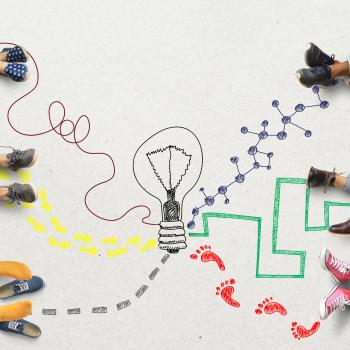Brainstorming and Reviewing Using the Carousel Strategy

About this Strategy Guide
This strategy guide introduces Carousel Brainstorming, also known as Rotating Review, and offers suggestions to implement this technique in your classroom for brainstorming about new topics or reviewing learned information.
Research Basis
Carousel Brainstorming (also known as Rotating Review) provides scaffolding for new information to be learned or existing information to be reviewed through movement, conversation, and reflection. According to Project CRISS, Carousel Brainstorming is a cooperative learning activity that can be used both to discover and discuss background knowledge prior to studying a new topic, as well as for review of content already learned. This technique allows for small group discussion, followed by whole-class reflection.
While taking part in Carousel Brainstorming, small groups of students rotate around the classroom, stopping at various “stations” for a designated period of time (usually 1-2 minutes). At each station, students activate their prior knowledge of a topic or concept and share their ideas with their small group. Each group posts their ideas at each station for all groups to read.
Strategy in Practice
- Choose several major topics/concepts that are new to your students or that are being reviewed from a lesson previously taught. Write each topic/question at the top of a piece of chart paper, and tape the paper to the wall. Following are some examples that you might use in your classroom:
- Before beginning a lesson on the civil rights era, you might post the names of some key people and events from this time in history to draw out students’ background knowledge.
- Upon finishing The Diary of Anne Frank, you might choose to pose different critical thinking questions about the novel as a means to review the story.
- After a unit on plants, you might post guiding questions about the major topics covered in the unit to review the material.
- Divide your class into groups of three or four and assign each group a different colored marker with which they will write their responses on the chart paper. Assign each group to a particular “station” or piece of chart paper.
- Give groups 1-2 minutes to discuss the topic/concept/question noted on the piece of chart paper among their group members and then write down everything they know or have learned about the topic on that particular piece of chart paper (using their assigned colored marker).
- After the allotted 1-2 minutes, each group should rotate to the next station where they will read the new topic/concept/question and what others have written about it, discuss it with their group, and add new information. Students can also write questions about things that other groups wrote (existing answers/notes about the topic/question).
- Continue this process until each group is back to their original station.
- Wrap up the brainstorming session by having a discussion about the topics on each piece of chart paper and reading/discussing what each group wrote, answering questions as you go.
- Have your students organize the information from the brainstorming session by using a graphic organizer, writing a summary, or doing a gallery walk, recording useful information.